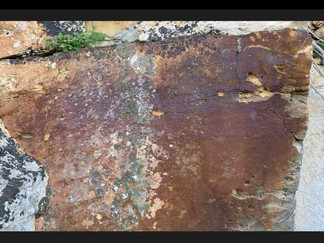Uncovering the Enigmatic Pyramids: Malta and Gozo vs. Ancient Sites Around the World
- David Collins

- Jan 17
- 3 min read
Updated: Jan 18
The islands of Malta and Gozo are filled with enigma and allure, inviting exploration through their rich history. What if beneath the surface lie hidden pyramids waiting to be uncovered? This idea sparks curiosity and draws fascinating comparisons to renowned ancient sites around the globe, such as Teotihuacan near Mexico City and the Temple of Kukulcán in Chichén Itzá. In this blog post, let’s delve into the secrets of potential pyramid-like structures in Malta and Gozo, their cultural importance, and how they connect to some of the most famous ancient sites worldwide.
The Hidden Pyramids of Malta and Gozo
While the possibility of pyramid-like structures beneath Malta and Gozo may sound unusual at first, the islands are already home to some of the oldest known structures globally. Take, for instance, the megalithic temples of Ħaġar Qim and Mnajdra. These temples show Malta’s early engineering skills and spiritual traditions.
What if larger structures reside beneath the soil of the islands, how would this enhance our understanding of the spiritual and engineering prowess of Malta's ancient civilizations? What may be found if advanced exploration techniques like ground-penetrating radar were used on the islands, which could unveil hidden structures without disturbing the surface?
A Comparison with Ancient Sites: Teotihuacan and the Temple of Kukulcán

Consider Teotihuacan, located just outside modern-day Mexico City, one of Mesoamerica's most significant ancient cities. Renowned for its colossal pyramids, such as the Pyramid of the Sun and the Pyramid of the Moon, these monumental structures showcase the extraordinary engineering and cosmological knowledge of their creators. The Pyramid of the Sun, standing at an impressive 216 feet tall, ranks among the largest pyramids in the world.

Similarly, the Temple of Kukulcán, a step pyramid at Chichén Itzá, is celebrated for its ingenious design. During the equinox, sunlight creates an optical illusion of a serpent slithering down the staircase, a testament to the creators' mastery of astronomy and architecture. Some scholars also suggest the pyramid may have functioned as a calendar, as Mnajdra temple in Malta does.
While Teotihuacan and the Temple of Kukulcán are celebrated for their grandeur, their excavation histories are fascinating. Before being unearthed, these pyramids were largely hidden beneath layers of earth and vegetation, appearing as little more than natural mounds. Over time, nature had concealed their true form, masking their intentional and intricate construction.
This raises an intriguing question: could a similar process have hidden pyramid-like structures on Gozo and Malta? What mysteries might lie beneath the fields and hills of these islands, waiting to be uncovered? Could Malta and Gozo hold a more significant role in the history of our planet than we currently understand?
Hidden Pyramids on Gozo?

Gozo, a small island, is home to at least 31 hills and hillocks, many of which are strikingly flat-topped. What has not been widely explored in academic circles is the possibility that some of these formations might be partially constructed. When we examine their shapes and coverings objectively, this idea becomes more plausible than it initially seems.
Closer inspection reveals intriguing characteristics that suggest these structures may be more than natural formations. The images below showcase examples of cut stone that is commonly found at various levels on the exteriors of hills and terraces. Additionally, many of these formations contain rooms and passages, hinting at a more deliberate and complex origin. The examples shown here are merely a fraction of the countless features that come to light with careful observation.
Examples of rooms and signs of construction on Malta & Gozo.
This brings us back to the central question: what if there are hidden pyramid-like structures on Gozo and Malta? How would this discovery reshape the worldview of those who call the Maltese islands home? And how could these structures be dated? Traditional carbon dating techniques cannot determine the age of stonework, but could some of these structures indeed be "as old as the hills"?
What kind of cultures might have used them? Did they live inside, build additional structures on top - now lost to time - or use them for entirely different purposes?
Finally, I leave you with an image I see almost daily as I navigate life on Gozo. One of our favourite places to visit is Ta' Pinu and Ta' Għammar Hill, both visible in the photo below. How strikingly similar the stepped hills appear to images of Teotihuacan and the Temple of Kukulcán. Could there be more to these formations than meets the eye?












Comentários